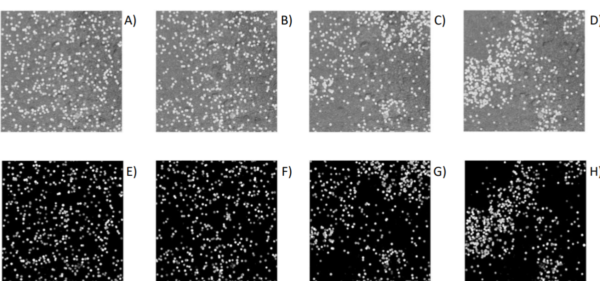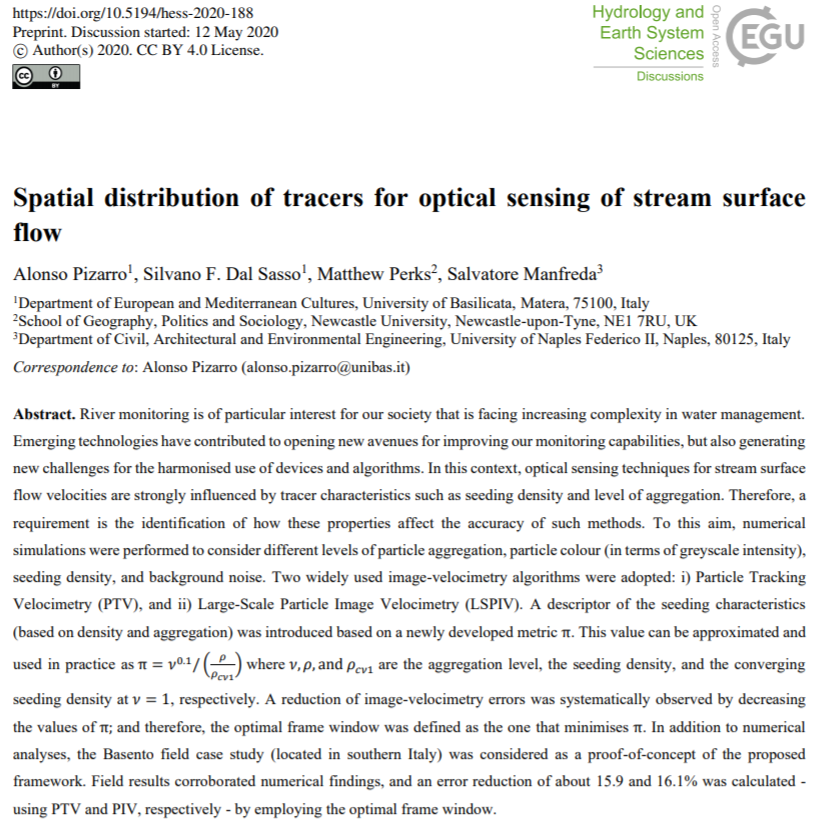River monitoring is of particular interest for our society that is facing increasing complexity in water management. Emerging technologies have contributed to opening new avenues for improving our monitoring capabilities, but also generating new challenges for the harmonised use of devices and algorithms. In this context, optical sensing techniques for stream surface flow velocities are strongly influenced by tracer characteristics such as seeding density and level of aggregation. Therefore, a requirement is the identification of how these properties affect the accuracy of such methods. To this aim, numerical simulations were performed to consider different levels of particle aggregation, particle colour (in terms of greyscale intensity), seeding density, and background noise. Two widely used image-velocimetry algorithms were adopted: i) Particle Tracking Velocimetry (PTV), and ii) Large-Scale Particle Image Velocimetry (LSPIV). A descriptor of the seeding characteristics (based on density and aggregation) was introduced based on a newly developed metric π. This value can be approximated and used in practice as π = ν0.1 / (ρ / ρcν1) where ν, ρ, and ρcν1 are the aggregation level, the seeding density, and the converging seeding density at ν = 1, respectively. A reduction of image-velocimetry errors was systematically observed by decreasing the values of π; and therefore, the optimal frame window was defined as the one that minimises π. In addition to numerical analyses, the Basento field case study (located in southern Italy) was considered as a proof-of-concept of the proposed framework. Field results corroborated numerical findings, and an error reduction of about 15.9 and 16.1 % was calculated – using PTV and PIV, respectively – by employing the optimal frame window.

How to cite: Pizarro, A., Dal Sasso, S. F., Perks, M., and Manfreda, S.: Spatial distribution of tracers for optical sensing of stream surface flow, Hydrol. Earth Syst. Sci. Discuss., https://doi.org/10.5194/hess-2020-188, in review, 2020. [pdf]
